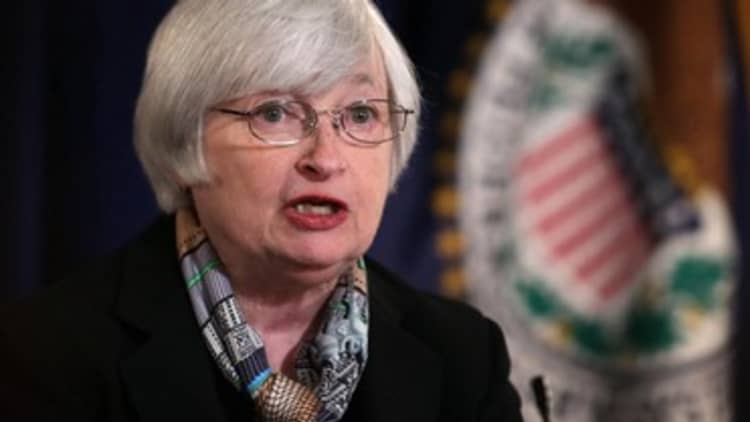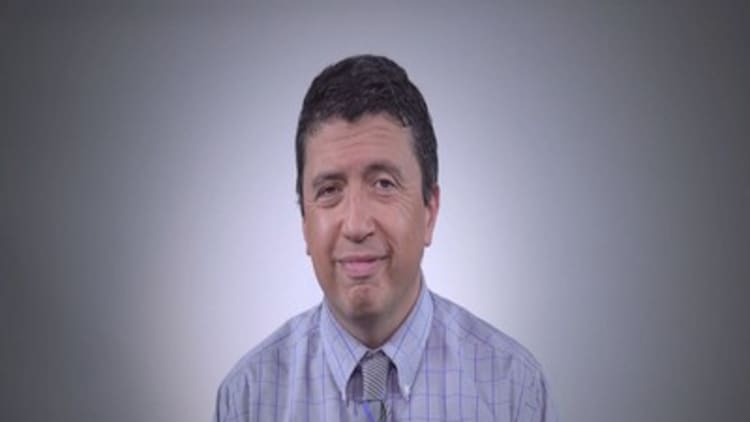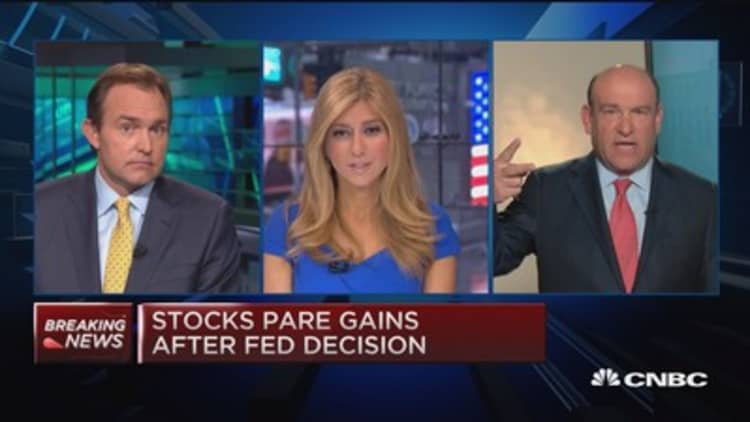


The Federal Reserve on Wednesday again passed on enacting its first interest hike in more than nine years and left few clues as to when a move would come.
As expected, the Federal Open Market Committee voted to maintain its zero interest rate policy, citing weakness in exports and soft inflation as reasons to continue its historically easy monetary policy. The FOMC vote had just one dissent, from Jeffrey Lacker, who wanted to see the Fed enact a quarter-point hike.
Markets had been looking for the Fed to stay accommodative, particularly in light of recent dovish comments from multiple governors, Daniel Tarullo and Lael Brainard among them, who said publicly that the timing wasn't right for an increase.
The initial market reaction was that the statement was at least moderately more hawkish, with some focusing on language indicating the factors the Fed will consider "in determining whether it will be appropriate to raise the target range at its next meeting."
However, beyond that there was little to chew on.
"The Fed continues to find more and more ways to say virtually nothing to the market," said Michael Arone, chief investment strategist for the U.S. Intermediary Business Group at State Street Global Advisors. "They want to keep their options open for December, but it's a nondescription of more of the same thing."
The decision comes amid multiple data points that show a weakening in the economy, particularly in job gains and exports. Inflation measures the Fed follows also reflect little in the way of wage and price pressures, while economists are anticipating a muted holiday shopping season.
The latest statement included only a modest change in the boilerplate language common in Fed communiques. It actually upgraded the progress of household spending and fixed income from "increasing moderately" to "solid" but added some language reflecting a recent softness in job creation.
"The pace of job gains slowed and the unemployment rate held steady," the statement read.
However, for those looking to parse the statement for indications about when a rate hike would happen, the latest Fed language offered little.
The statement reiterated September's introduction of language that showed the central bank is "monitoring global economic and financial developments," but added little more.
The Fed last raised the funds rate June 29, 2006, then began cutting on Sept. 18, 2007, as the global financial crisis began to steepen. On Dec. 16, 2008, the FOMC then took the rate down to a 0-0.25 percent range where it has stayed since.
Market participants had been expecting the committee to raise rates right up through August, then changed course as the economy weakened, the stock market plunged into correction territory and fears escalated that global weakness would spread.
In the meantime, job creation cooled considerably, with the most recent U.S. nonfarm payrolls report coming in at just 142,000 new positions in September and prior months' reports revised lower. Gross domestic product growth is expected to be near 1.5 percent for the third quarter, with CNBC's Rapid Update tracker putting the figure at 1.7 percent.
Traders have adjusted their expectations, with a CME futures gauge now putting the most likely chance for a hike in March 2016.
Uncertainty over the Fed's direction has contributed to market volatility, though stocks have been on the rise since late September.


